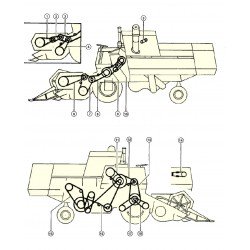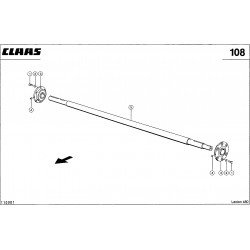Combine harvester CASE IH

The International Harvester company began development of combines in 1913, and in 1915 the first model was presented. For its movement 8 or 10 even rowed horses were used. In 1925 the tractor drawn combine was presenting.
In 1942 the International Harvester presents the first self-propelled harvester combine. Model 123-SP was equipped with 6 cylinder engine, 12 foot (3,6 meter) grain platform with hydraulic master. In 1949 the combine was updated and received the name SP 125. In 1950 there was an improved version - 125 SPV, and in 1952 - 125 SPVC which option could be completed with on 10,12 and 14 foots (3,0; 3.6 and 4,3 meters) heder.
From 1954 to 1957 the next model 141 SP was made successfully. It was the first “IH” harvester combine to offer a corn head. In 1956 IHC releases a minicombine called the 101 and has 6 cylinder engine, 58 h.p. power. The combine was universal and could be completed with 10,12,14 foots wide (3,0; 3.6 and 4,3 meters) or a two-row corn head.
In 1959 the largest is let out for that time the self-propelled IHC combine, model 151. The combine possessed the capacity of 75 h.p. and could be completed with of 12,14,16 foots (3,6; 4.3 ; 4.9 meters) grain platforms, 2-or 4-line corn heads. The side hill levering was available as an option. The same year IHC presented the unique self-propelled combine, model 91 in which the wheel was replaced with levers, like modern lawn-mowers. It was the only thing among IHC company combines which was not made at Moline. It was manufactured at the same International Harvester plant in Canada, letting out swathers. Every year the sizes of combines increased. The next model 181 with an engine capacity of 80 h.p. was completed with 46 inch separator, 12,14,16,18 foots (3,6; 4.3 ; 4.9 ; 5.5 meters) wide grain platforms or four-row corn head.
Combines 101, 151 and 181 it is proud bore the name "McCORMICK". Besides the main specialization - grain and corn, they with minor changes were applied to harvesing of rice and beans. Rice options were completed with the increased tires of low pressure. Combines for of the bean had a special design of the receiver of a heder with changeable height over earth level.






